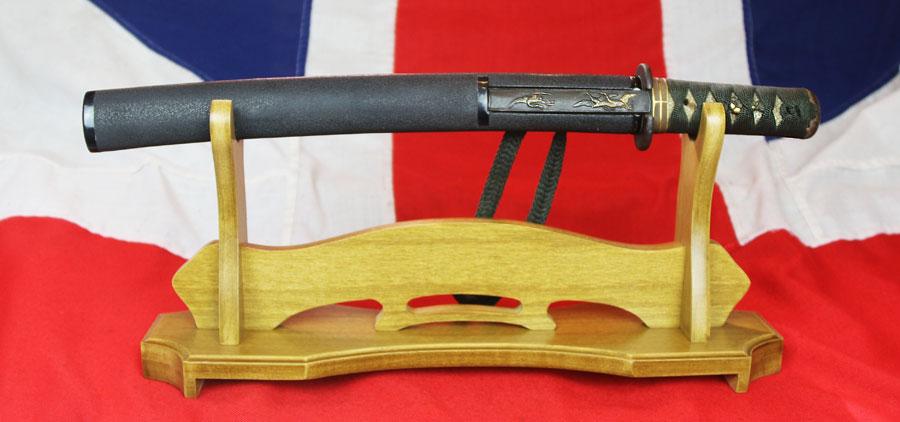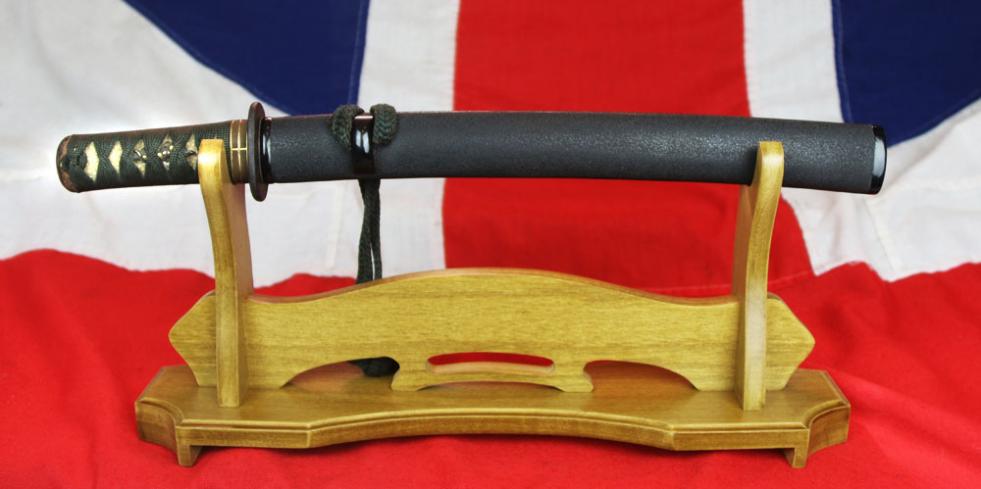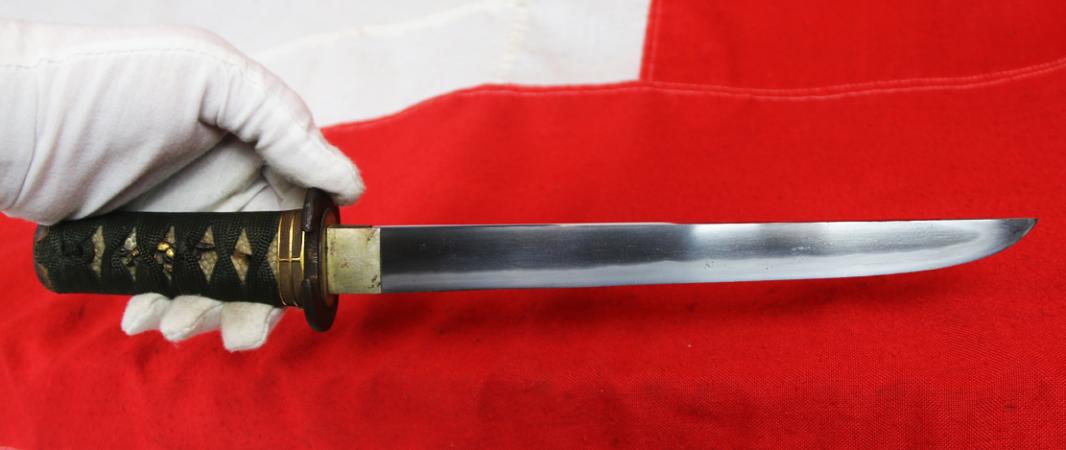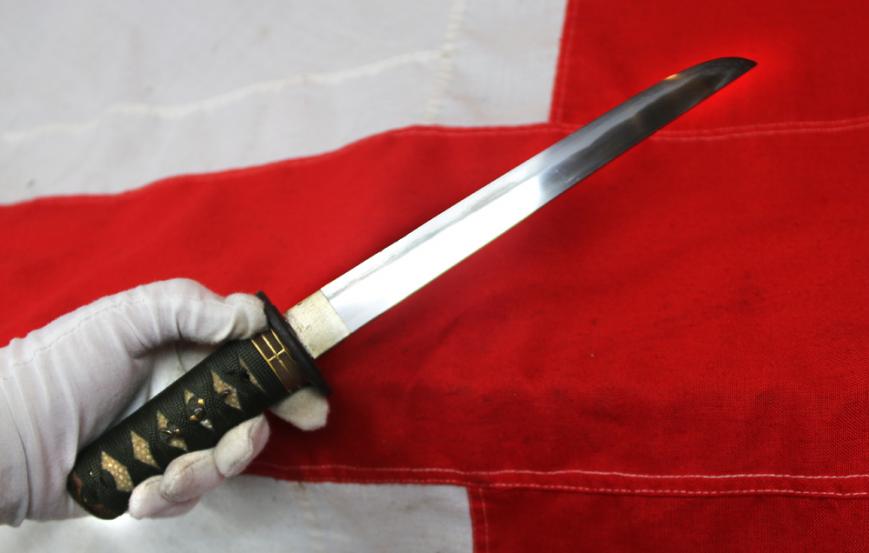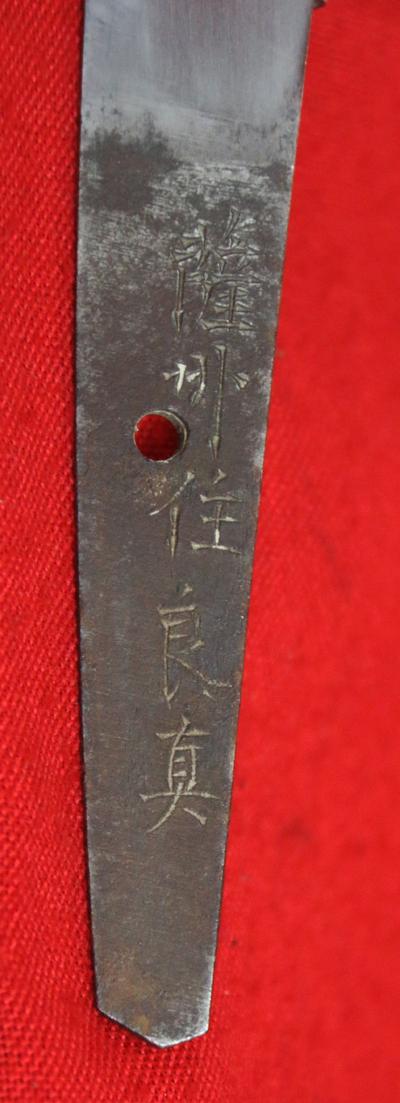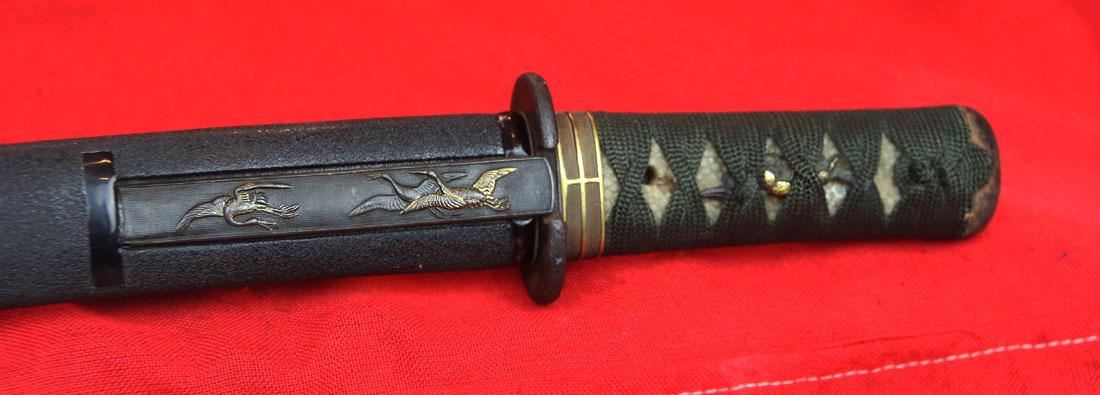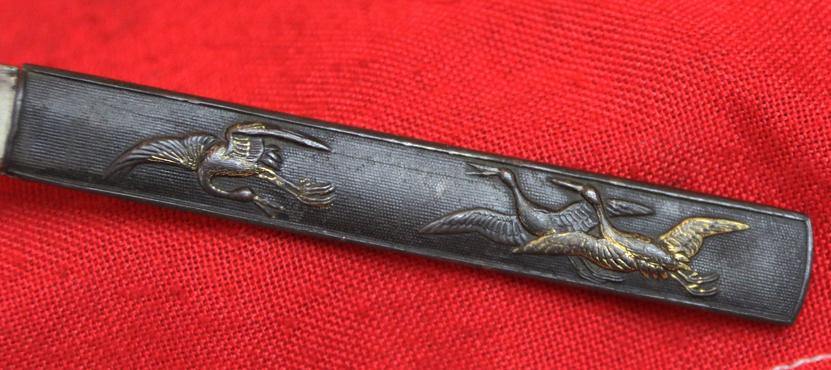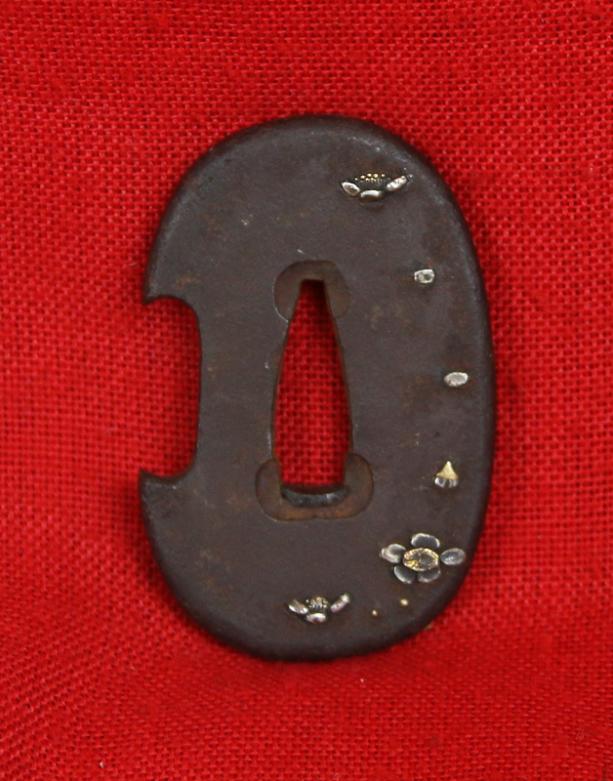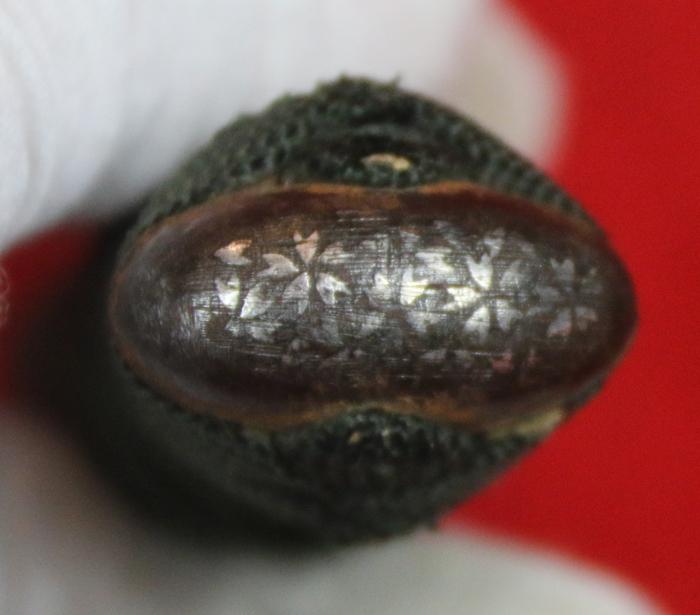A Beautiful Antique Edo Period 1598-1868 Tanto Signed Satsuma ju Yoshizane
In all original Edo period mounts fittings and saya, stunning ishime stone finish lacquer to the saya in pristine condition.
Kozuka utility knife also signed with maker's signature. See photo 10 in the gallery
Pair of menuki of gold embellished flower sprays, iron silver inlaid kashira, gilt and nanko fuchi.
Blade in full traditional stone polish showing a delightful notare hamon.
Tanto are generally forged in hira-zukuri style (without ridgeline), meaning that their sides have no ridge line and are nearly flat, unlike the shinogi-zukuri structure of a katana. Some tanto have particularly thick cross-sections for armour-piercing duty, and are called yoroi toshi. Tanto first began to appear in the Heian period, however these blades lacked artistic qualities and were purely weapons. In the Early Kamakura period high quality tanto with artistic qualities began to appear, and the famous Yoshimitsu (the greatest tanto maker in Japanese history) began his forging. Tanto production increased greatly around the Muromachi period and then dropped off in the Shinto period. Shinto period tanto are quite rare. Tanto were mostly carried by Samurai; commoners did not generally carry them. Women sometimes carried a small tanto called a kaiken in their obi for self defence. It was sometimes worn as the shoto in place of a wakizashi in a daisho, especially on the battlefield. Before the 16th century it was common for a Samurai to carry a tachi and a tanto as opposed to a katana and a wakizashi.
.
Code: 23506
3750.00 GBP

